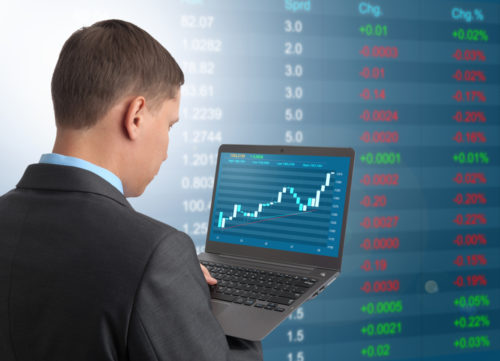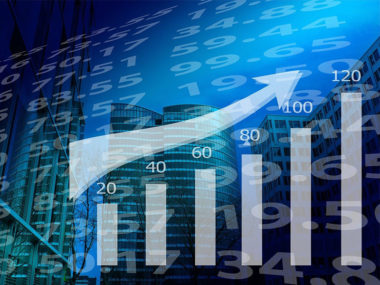Market capitalization — “market cap” for short — is the total market value of a company’s stock. The equation for the market cap is simple. You start with the price of a single share of a company’s stock, and then you multiply it by the total number of outstanding shares on the market.
Market capitalization is a fundamental piece of information for investors. However, the equation only works for publicly traded companies that have a stock price anyone can see and shares you can purchase on an exchange. In some cases, investors use market cap information as a starting point for researching and making an investment strategy for a particular stock.
Table of Contents
How Is Market Cap Used in the Investing World?
The market cap provides insight into the size and value of a company. Market cap figures are useful for risk management, portfolio diversification, and growth forecasts. However, market cap information does not paint a complete picture of a company. Even so, some investors base their expectations on a company’s market cap.
Most investors seek to diversify by balancing their portfolio using stocks that are at different market cap levels.
What Does the Market Cap of a Company Indicate?
Market cap indicates a company’s standing in the market — therefore it says a lot about risk level and growth potential. For example, a large-cap company usually has a proven track record and a diversified operation that can withstand economic fluctuations. It is, therefore, a less risky investment compared to a younger, small-cap company.
Small-cap and micro-cap companies focus on business strategies that will bring growth rather than concentrating on diversification and long-term plans. Some small caps work on developing in one sector or on one product or class of products. If they run into economic headwinds in their industry, they could struggle. For this reason, investors expect small-cap stocks to be more volatile than large caps.
Investors should note that market cap focuses on stock prices and shares. It does not take factors such as intrinsic value into account. Stock prices reflect current investor sentiment. However, the financial fundamentals of a company such as cash flow, balance sheets, reports, and earnings-per-share figures can paint a different picture of a company’s value.
Market Capitalization Formula
The market capitalization formula is very simple.
Share price x number of shares = market cap.
So, for example, if a company has five million outstanding shares, and the closing price of a single share is $25, the market capitalization is $125 million.
$25 x 5,000,000 = $125,000,000
The market cap may change quickly. For example, if the price of one share of the example stock dropped from $25 to $20, the equation would change, and the market cap would drop to $100 million.
Market Cap by Business Size
Based on their market capitalization, companies generally fall into four categories: micro-cap, small-cap, medium-cap, and large-cap. Each of these has a certain market cap range, and investors sometimes assign different traits to a company based on its market cap category. For example, most investors initially assume that large-cap stocks are more stable and less risky than small-cap companies.
Many investors use the market cap as a starting point for their research of a company and development of a trading strategy for a particular stock.
Micro-Cap
Micro-cap companies are those with a market capitalization between $25 million and $300 million. These companies are the smallest publicly traded companies. In most cases, these firms do not have enough of a track record or enough financial data to draw serious consideration from investors.
On one hand, this lack of information makes it difficult to foresee how successful a company could be. On the other hand, micro-caps have almost unlimited upside potential. Some of the biggest large-cap stocks on today’s market started as micro-caps. Of course, these investments are risky as well. Most micro-caps do not grow into industry titans, and many fail completely.
Another drawback is that you do not get dividend earnings from these stocks because they usually put all their profits back into development and future growth rather than disbursing money to investors.
Without lots of financial data and an unsure place in their industry or sector, most micro-caps are risky.
Small-Cap
Some investors consider micro-cap stocks a subset of small-cap stocks. Small caps are companies that have a market capitalization of $2 billion or less. Small-cap companies possess some of the same positives as micro caps. They have a lot of upside potential, so investors get a chance to purchase them early and enjoy exponential growth.
There is a critical difference between micro caps and small caps. As a company’s value approaches $1 billion or so, other players in their industry may start to take notice. Wealthier companies may try to acquire a small-cap upstart, which can lead to significant profits for small-cap stockholders. Even the mere possibility of an acquisition could perk the interest of investors and drive up share prices.
Small-caps also suffer from a lack of diversification. Many are still in the development stage and, therefore, their fortunes can rise and fall along with economic changes, competition from more-established firms, and other factors. Investing in these companies does have a lot of upside potential, but they are still risky bets.
Some investors with more risk tolerance may try to use these stocks to profit from swings in the market because they are more volatile than larger companies. At the same time, small caps do not have a lot of liquidity, so you may find it difficult to sell shares quickly if necessary.
Medium-Cap
Medium-cap companies, or mid-cap companies, fall into the $2 billion to $10 billion range. These companies are more established than small caps, but they still offer a lot of upside potential. Mergers and acquisitions are a possibility for mid-cap companies.
At the same time, mid-cap stocks do not usually pay dividends, and, since they are not yet as established as large-cap companies, they do present a bit more risk to investors.
Short-term traders may not benefit from mid-cap companies because their share prices do not fluctuate as much as small-cap stocks. Investors looking to lower risk in exchange for slightly more modest growth potential may be attracted to medium-cap stocks.
Large-Cap
Large-cap companies have a market cap of over $10 billion. In most cases, these companies are leaders in their particular industry and major players in the national economy.
Investors have a clear set of reasons to invest in large-cap stocks. Most of these firms pass profits on to shareholders in the form of dividends. Also, their stock prices do not fluctuate as much as small companies’ stocks. They are large enough and diversified enough to recover from economic downturns and to compete with other companies in their sector.
Large-cap stocks usually have a long history. Investors can easily access data and financial statements regarding past performance to make informed investment decisions. This information also helps investors make assumptions about intrinsic value and other factors that affect investment decisions.
Because they are at the top of their industries, these companies have already realized a lot of their potential. They pay dividends and may grow steadily and provide solid long-term returns, but they are not going to grow exponentially like small-cap stocks. Their stability may make them a great choice for beginner investors.
Can a Business’s Market Cap Change?
The market cap equation is share price multiplied by the number of shares, so either the price or number variables can change a company’s market cap. If a company’s share price rises significantly (or falls dramatically), it will most likely move into a different market cap category.
Another way a company’s market cap can change is if the company exercises a warrant on company stock, which makes more shares publicly available. This move increases the number of shares on the market.
Sometimes, stocks get split. When this happens, the market cap does not change. The price of the stock gets cut in half, but there are twice as many shares as before the split, so the market cap equation balances out and, therefore, does not change.
Image Source: https://depositphotos.com/





